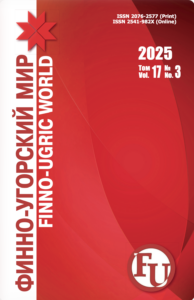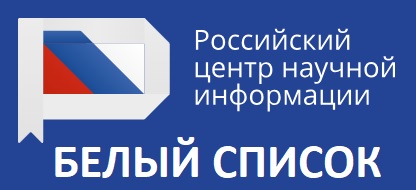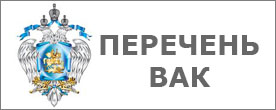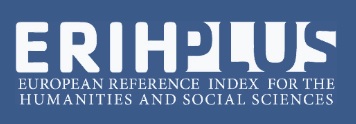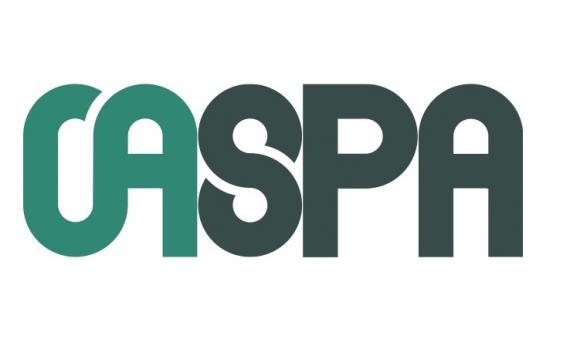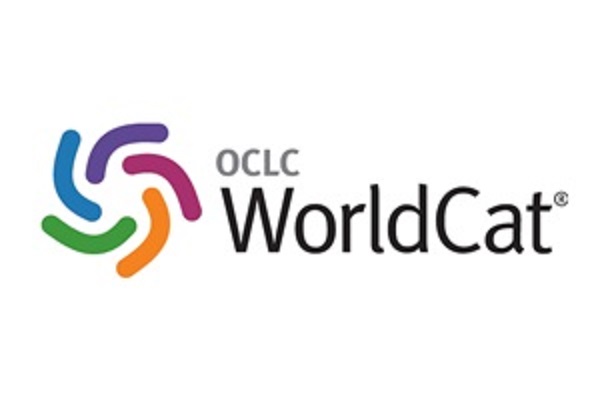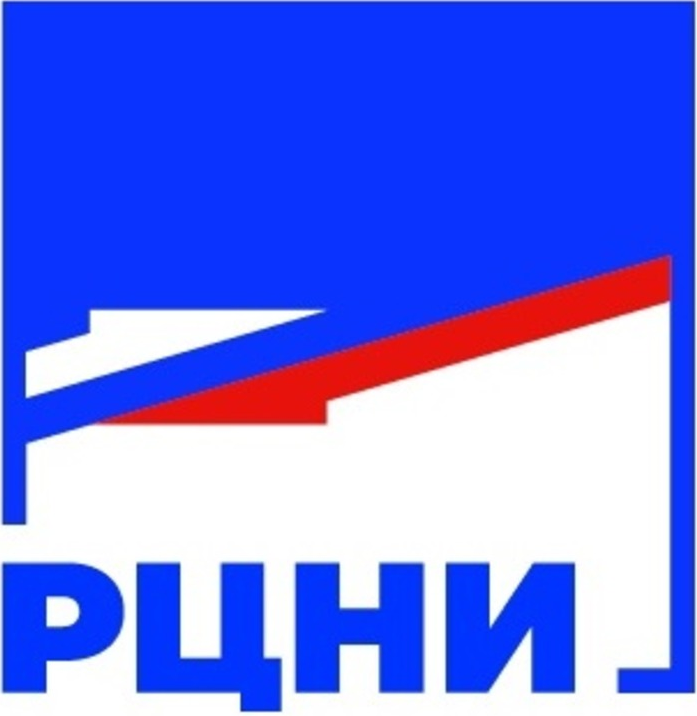Attention!
The Editorial Board does not provide any pay or agency services and it does not work with intermediaries.
The articles can be submitted by the authors only. All publications in the journal are free. The fast track publication as well as conference proceedings are not available.
The journal publishes only original manuscripts that have never been published or submitted elsewhere.
Previously published articles or the article which were simultaneously submitted to other journals are considered invalid and are retracted.
Author Guidelines
Original scientific articles written in Russian and English are considered for publication. These should correspond to the profile of the Journal and reflect the results of the authors’ original scientific research. Submission to the editorial office of previously published articles or articles sent for publication to other journals is not allowed. In the event of simultaneous submission of a manuscript to different journals, the published article will be retracted (withdrawn from print). Monitoring of unauthorised citation is implemented using Antiplagiat and CrossCheck systems. In case of detection of multiple borrowings, the Editors will act in accordance with the COPE rules.
Particular attention should be paid to the quality of translation. It is desirable that this be performed by a native speaker of English. Please write your text in good English (American or British usage is accepted, but not a mixture of these). Authors who feel their English language manuscript requires editing, in order to eliminate possible grammatical or spelling errors and conform to contemporary norms of scientific English, may wish to use a language editing service.
Article Submission
The article and all related materials should be sent only through the electronic form on the Journal’s website: https://journals.rcsi.science/2076-2577 (button SEND ARTICLE). Preliminary registration is required. After the manuscript is uploaded to the Editorial Office, the corresponding author will receive a notification of its registration. If the notification is not received within 24 hours, it will be necessary to clarify whether the article has reached the editorial office by writing (finno-ugric.world@mail.ru) or calling the Editorial Office.
Submission of an article to the Journal implies that the manuscript:
– has not been previously published in another journal;
– is not under review by another journal;
– all co-authors agree to the publication of the article.
When submitting a manuscript to the journal, authors should make sure that all citations are correct, sources for tables and figures are indicated (unless otherwise specified, it is assumed that tables and figures are created by the author).
Manuscript text format. The Editorial Board accepts texts saved in .doc, .docx, .rtf format. It is desirable to use Times New Roman font, 14 point font and 1.5 line spacing. Manual hyphenation is not allowed. It is necessary to remove double spaces in the text and unnecessary line breaks from the text (in automatic mode through Microsoft Word service “find and replace”). When drawing up the text of the manuscript do not use underlining within the text (for subheadings use bold, for emphasis in the text – italics); foreign names (journals, organizations, etc.) should be left in the original, enclosed in quotation marks.
The volume of the full text of the manuscript, including tables and reference list, should not exceed 6,000 words. The number of words in the text can be found in the Word menu (“File” – “View document properties” – “Statistics”).
The structure of the manuscript should follow the recommendations below.
| Article element |
Recommendations on the content and design |
| Front page |
Indicate in Russian and English:
– full names of the authors;
– official name of the organization without abbreviations, city and country;
– detailed information about the authors: degree, title, position and additional information at the request;
– e-mail and phone number of all authors with the indication of the corresponding author;
– article type;
– title of the article;
– abstract (it should not contain abbreviations and terms introduced for the first time);
– keywords |
| Title
|
The title of the article should briefly (no more than 10 words) and accurately reflect the content of the article, the topic and results of the conducted scientific research. It should include both informativeness and attractiveness, uniqueness of the author’s scientific work. The title is provided in Russian and English |
| Abstract
|
The abstract serves as an extended title of the article and narrates its content. It should clearly indicate the following constituent parts:
1) Introduction: formulates a problem and the purpose of the research.
2) Materials and Methods: Provides information about the object and sequence of the study.
3) Results: The author’s specific results of the study are presented.
4) Discussion and Conclusion: The practical significance and perspectives of the study.
The given parts of the abstract should be highlighted with appropriate subheadings and relevant information should be presented in these sections. The recommended length of the abstract is 250–300 words. The abstract is provided in Russian and English |
| Keywords |
Keywords are the search image of a scientific article. In all bibliographic databases it is possible to search articles by keywords. In this regard, they should reflect the design of scientific research, the main provisions, achievements, results and terminology. The recommended number of keywords is 5–10. The keyword are provided in Russian and English |
| Financing |
Funding information is provided in Russian and English |
| Acknowledgements |
This section should mention people who helped the author to prepare this article, organizations that provided financial support. In this section it is possible to express gratitude to anonymous reviewers. The references are provided in Russian and English |
| Information on conflict of interest |
The article should indicate an actual or potential conflict of interest. If there is no conflict of interest, it should be written that “the author declares that there is no conflict of interest”. Please note that the presence of a clear or potential conflict of interest (including financial interest of the authors) or participation of any organizations (public or private) in conducting the research and writing the paper is NOT a reason to refuse to publish the manuscript. On the contrary, this information will indicate the openness of the authors and reliability of the results, which will give the manuscript additional advantages at the stage of evaluation by reviewers and will cause more interest and trust of the readers. Information is provided in Russian and English |
| Main text |
The main text of the empirical article is presented in Russian or English in a certain sequence:
1) Introduction;
2) Literature Review;
3) Materials and Methods;
4) Results and Discussion;
5) Conclusion.
It is required to separate these parts with appropriate subheadings and to present relevant information in these sections.
1) Introduction (1–2 pages). The introduction should express the main idea of the publication, which differs significantly from the current understanding of the problem, complements or deepens the already known approaches to it; the most famous and authoritative publications on the topic under study are given, unresolved problems are identified; attention is drawn to the introduction of new facts, conclusions, recommendations, patterns into scientific circulation. The purpose of the article follows from the statement of the scientific problem.
2) Literature Review (1–2 pages). Here it is necessary to outline the principal contemporary studies and publications on which the argument relies, state current views on the problem, underline difficulties in developing the topic and highlight unresolved issues within the main problem to which the article is devoted. It is important to carry out a comparative analysis that cites existing publications on the stated issues.
3) Materials and Methods (1–2 pages). This section provides details about the object of the study; the sequence of the study is indicated and the choice of methods used is justified.
4) Results and Discussion. In this part of the article should be presented systematized author’s analytical and statistical material. The results of the conducted research should be described fully enough so that the reader could trace its stages and assess the validity of the author’s conclusions. This is the main section, the purpose of which is to prove the working hypothesis(s). The results, if necessary, are supported by illustrations (tables, graphs, figures), which present the source material or evidence in a convoluted form. It is important that the illustrated information does not duplicate the information already given in the text. It is desirable to compare the results presented in the article with previous works in this area, both by the author and other researchers. Such a comparison will additionally reveal the novelty of the work done, will give it objectivity. The results of the study should be summarized briefly, but at the same time contain enough information to evaluate the conclusions drawn. It should also be justified why these particular data were chosen for analysis.
5) Conclusion. The conclusion summarizes the results of the study. It summarizes the main thoughts of the main part of the work. It is necessary to compare the results obtained with the goal outlined at the beginning of the work. The conclusion summarizes the results of comprehension of the topic, draws conclusions, generalizations and recommendations arising from the work, emphasizes their practical significance, and identifies the main directions for further research in this area. In the final part of the article it is desirable to include attempts to forecast the development of the considered issues.
Note: the above sections in the text of the article are highlighted by appropriate subheadings |
| Tables |
Each table should be placed immediately after the paragraph where it is first referenced. There should be no empty boxes in the tables. Numbering of tables is given in Arabic numerals separately from the numbering of figures. The title is printed above the table. All titles, captions and structural elements of graphs, tables, schemes, etc. shall be in Russian and English |
| Figures |
Figures should be submitted in raster or vector format with a resolution of at least 300 dpi. They should allow text editing and the possibility of resizing. The use of scanned images in the form of dependencies, graphs, structural elements, etc. is undesirable or should be justified. All graphical data are placed in the text of the article, as well as sent additionally in the form of separate files. In the text of the article, the names of figures (graphs, photographs) are placed immediately after the paragraph where they are first referred to. All figures are numbered consecutively with Arabic numerals as they are used in the text of the article. The title is printed below the figure. Captions to figures are brief but informative. Fonts within the figures are chosen from Times New Roman, the font size should allow easy reading of the inscriptions. Inscriptions in the Roman alphabet are italicized, in Russian – straight. Figures in the article should coincide with the original files sent. Titles of figures and notes to them, captions, the text of the legend should be translated into English and placed under the corresponding text on a new line. Different illustrations should be brought to a single style of graphic execution, observing the uniformity of their design. Graphs, charts and diagrams should be drawn up in Microsoft Excel. If an electronic graphic image is created in Microsoft Office applications (Word, PowerPoint, Excel, Visio), Corel Draw or Adobe Illustrator, it should be presented “as is” in the same format (doc, docx, ppt, pptx, xls, xlsx, vsd, vsdx, cdr, ai, eps). Charts and graphs provided in these files must be editable.
If a figure (table, photograph) has been previously published elsewhere (including in one’s own work), the original source should be cited and written permission should be obtained from the copyright holder to reproduce the figure, except for documents in the public domain |
| Footnotes |
If necessary, footnotes are used, numbered in Arabic numerals throughout the document. Footnotes may contain quotations from works that are mentioned in the text, additional information. If it is necessary to refer to an article in a social and political newspaper, a text on a website or blog, an abstract, a textbook, it is necessary to put information about the source in a footnote |
| Formatting of quotations |
The Journal adopts the Vancouver citation style (reference in the text in square brackets, full bibliographic description of the source in the reference list in the order of mention in the text of the article) |
| List of references |
List of references is provided in Russian and English. The reference list includes only peer-reviewed sources (articles from scientific journals and monographs) mentioned in the text of the article. References to articles accepted for publication but not yet published should be marked with the words “in press”; authors should obtain written permission to refer to such documents and confirmation that they have been accepted for publication. Information from unpublished sources should be marked with the words “unpublished data/documents”; authors should also obtain written permission to use such material.
Bibliographic descriptions of references should be compiled in the AMA version of the Vancouver format (AMA style, http://www.amamanualofstyle.com).
If the article is written in Latin script (German, Finnish, Danish, Italian, etc.), it should be cited in its original form:
Example:
Wichmann J. Beiträge zur Ethnographie der Tscheremissen. Helsinki: Société FinnoOugrienne; 1913. 146 s.
Bibliographic descriptions of references to Russian-language sources should consist of two parts: Russian-language and Latin-language (consecutive). The Russian-language part of the description should be given first, followed by the Latin-language part.
Surname Abb. of first name. Title of the article. Name of the journal. Year;Volume(Issue):Pages. https://doi.org/10.19163/2307-9266-2023-11-5-412-421
Example:
Agafonova N.A., Ryabov I.N., Ryabova G.V. The Variation of the Objectal Conjugation Suffixes in the Erzya Dialect Area. Finno-Ugric World. 2023;15(3):264–273. (In Russ., abstract in Eng.) https://doi.org/10.15507/2076-2577.015.2023.03.264-273
4 or more authors
Example:
Martynov V.L., Balabeykina O.A., Korolyov L.A., et al. Finns-Ingermanlanders and Cross-Cultural Dynamics of the Suburban Area of Saint Petersburg. Finno-Ugric World. 2024;16(4):444–458. (In Russ., abstract in Eng.) https://doi.org/10.15507/2076-2577.016.2024.04.444-458
Footnotes
Chapter references from the book
Surname Abb. of first name. Title of the chapter // Title of the book. City: Publisher, Year. Pages. https://doi.org/10.1007/978-981-99-1191-2_4
Example:
Li J. Sustainable Development of Higher Education in China. In: Sustainable Education Policy Development in China. Exploring Education Policy in a Globalized World: Concepts, Contexts, and Practices. Singapore: Springer; 2023. p. 65–85. https://doi.org/10.1007/978-981-99-1191-2_4
References for the monograph
Surname Abb. of first name. Title : A Monograph. City : Publisher, Year. Pages. URL: (Date of reference).
Example:
Gorshkov M.K., Klyucharev G.A. [Continuous Education in the Modern Decade: Monograph]. Moscow: Yurait; 2023. (In Russ.)
Reference to dissertation abstract
Surname Abb. of first name. Title: Abst. of diss. City : Publisher, Year. Pages. URL: (date of reference: ).
Example:
Kaksin A.D. [Means of Expressing Modality and Evidentiality in the Khanty Language (Based on the Kazym Dialect): Abstract. Diss. … Doctor of Philological Sciences. Saransk; 2011. (In Russ.)
References to normative documents
Title of normative act [Electronic resource] : Type, date and number : by whom adopted and when. URL: http://www.kremlin.ru/acts/bank/46328 (date of reference: 10.03.2022).
Example:
[On Education in the Russian Federation (with amendments and additions)] [Electronic resource]: Federal dated December 29, 2012 No. 273-FZ. (In Russ.) Available at: https://www.consultant.ru/document/cons_doc_LAW_140174/ (accessed 10.01.2025).
Link to electronic resource
Resource title : website [Electronic resource]. URL: (date of reference: 10.03.2022).
Example:
[All-Russian Population Census 2002. National Composition of the Population by Regions of Russia] [Electronic resource]. (In Russ.) Available at: https://www.demoscope.ru/weekly/ssp/rus_nac_02.php?reg=49 (accessed 06.04.2024). |
| Authors’ contribution |
To formulate the actual contribution of each co-author to the completed work, it is necessary to use CRediT (Contributor Roles Taxonomy) – a standard developed by the National Information Standards Organization (NISO) (https://credit.niso.org/). The order of citation of authors and co-authors of the article is agreed by them independently. Information is provided in Russian and English. |
Submission Preparation Checklist
As part of the submission process, authors are required to check off their submission’s compliance with each of the following items, and submissions that do not adhere to these guidelines may be returned to the authors.
- This article has not been previously published or submitted for consideration and publication in another journal (otherwise, please explain this in Notes to the Editor).
- The submitted manuscript file must be in Microsoft Word or RTF format – *.doc, *.docx, *.rtf.
- Internet links must be provided as full URLs.
- The text must be typed with 1.5 line spacing, Times New Roman font, 14 pt; emphasis must be in italics, not underlined (except for Internet links); all illustrations, graphs, and tables must be located in the text where they are meaningful (not at the end of the document).
- The text complies with the stylistic and bibliographic requirements of the Guidelines for Authors, located in the About Us section.
- The authors’ names have been removed from the article title and other requirements of the Ensuring Anonymity in Peer Review document have been met.
Copyright Notice
Federal State Budgetary Educational Institution of Higher Education “National Research Ogarev Mordovia State University”, hereinafter referred to as the “Licensee”, on the one hand, and citizens of , hereinafter referred to as the “Licensor“, on the other hand, hereinafter referred to as the “Party/Parties” have entered into this agreement (hereinafter referred to as “Agreement”) as follows.
Subject matter of the Agreement
1.1. Under this Agreement, the Licensor grants the Licensee, free of charge, the right to use the Editorial Board of the journal Finno-Ugric World,
(name and characteristics of the materials to be transferred)
hereinafter referred to as “Work”, on a non-exclusive license within the limits and for the term set forth in the Agreement.
1.2. The Licensor warrants that it has exclusive copyright in the Work transferred to the Licensee.
1.3. The Licensor guarantees that the transfer of the rights to the Work and its further use by the Licensee in accordance with this Agreement, will not lead to a violation of the rights of third parties. This warranty also implies the written consent of the authors of the Work, as well as of the persons who are the owners or other legal owners of the equipment, software and/or hardware, technical means, materials and others involved by the author and/or the Licensor in the creation of the Work and/or depicted in the Work, to the performance by the Licensor of the obligations provided for in this Agreement, in particular to the transfer of the rights to the Work to the Licensee.
1.4. The Licensor guarantees that during the creation of the Work and the subsequent transfer of rights to it to the Licensee confidential information (state, official, trade secrets) will not be violated.
1.5. The Licensor guarantees that the Work has not been published before the transfer of rights to it to the Licensee, and is not under consideration in publications and/or other media thematically similar to the publications and information products of the Licensee. If a manuscript is found to have been submitted simultaneously to several editions, the published article will be retracted (withdrawn from publication).
- Rights and obligations of the Parties
2.1. The Licensor grants Licensee the following rights for the duration of the exclusive rights to the Work:
2.1.1. The right to reproduce the Work (duplication, replication or other reproduction of the Work) without limitation on the number of copies. At the same time, each copy of the Work shall contain the name of the author of the Work;
2.1.2. the right to distribute the Work by any means;
2.1.3. the right to be included in a composite work;
2.1.4. the right of public disclosure;
2.1.5. the use of metadata (title, author’s (copyright holder’s) name, abstracts, bibliographic materials, etc.) of the Works through distribution and communication to the public, processing and systematization, as well as inclusion in various databases and information systems.
2.1.6. the right to assign, on contractual terms, some or all of the rights obtained hereunder to third parties without payment of remuneration to the Licensor.
2.2. The Licensor transfers the rights to the Licensee under this Agreement on the basis of a non-exclusive license.
2.3. The Licensor shall provide the Licensee with the Work in electronic version in Word format for review within three business days. Within thirty (30) business days, if the Licensee has no claims or complaints against the Licensor related to the quality (content) or volume of the Work provided for review, the Parties shall sign the Acceptance Act of the Work.
2.4. The date of signing the Acceptance Act of the Work shall be the date of transfer to the Licensee of the rights set forth in this Agreement.
2.5. The Licensee undertakes to observe the copyrights provided by the current legislation, the rights of the Licensor, and to protect them and take all possible measures to prevent infringement of copyrights by third parties.
2.6. If the Licensor is a graduate student, he or she agrees on the final version of the manuscript with the supervisor.
2.7. The territory in which the rights to the Works may be used is all countries of the world without limitation.
2.8. The Licensor agrees to comply with the basic principles of the editorial policy:
- research reported in the Work must be conducted in accordance with ethical and necessary legal standards;
- research results must be presented clearly, honestly, without fabrication, falsification, tampering, or improper manipulation of data;
- research methods should be described clearly and unambiguously, so that their conclusions have confirmation;
- the submitted work must be original, not plagiarized, and not contain compilation fragments;
- the authorship of a scientific publication (if there are coauthors) should accurately reflect the personal contribution of each coauthor to the work and its presentation in the publication;
- funding sources and relevant conflicts of interest must be disclosed.
- Responsibility of the Parties
3.1. The Licensor and the Licensee shall be liable, in accordance with the applicable laws of the Russian Federation, for non-performance or improper performance of their obligations under this Agreement.
3.2. The Party that improperly performs or fails to perform its obligations under this Agreement shall be obliged to reimburse losses caused to the other Party, including lost profits.
- Concluding Provisions
4.1. Disputes and disagreements that may arise in the performance of this Agreement shall, if possible, be resolved through negotiations between the Parties.
4.2. If a dispute cannot be resolved through negotiations, the pre-trial (claim) procedure for dispute resolution shall apply. In such cases, the Party, whose right has been violated, shall be obliged to file a claim with the other Party, stating its requirements, before going to court. The deadline for responding to the claim shall be ten (10) business days from the date of its receipt.
4.3. If the disagreement cannot be resolved by negotiation or by claim procedure, disputes shall be considered in court at the plaintiff’s location.
4.4. This Agreement shall enter into force upon its signing by both Parties and the Certificate of Acceptance of the Work, and shall remain in effect for the entire term of the exclusive rights to the Work.
4.5. This Agreement may be terminated at any time by mutual consent of the Parties, subject to the Parties signing an agreement to that effect.
4.6. This Agreement may be unilaterally terminated in cases provided for in the applicable laws of the Russian Federation, or by court order.
4.7. Any amendments and additions to this Agreement shall enter into force only if they are made in writing and signed by both Parties to this Agreement.
4.8. In all matters not provided for in this Agreement, the Parties shall be governed by the provisions of the applicable laws of the Russian Federation.
4.9. This Agreement has been drawn up in two copies of equal contents and legal force, one for each of the Parties.
Privacy Statement
Имена и адреса, указанные Вами при регистрации на этом сайте, будут использованы исключительно для технических целей: контакта с Вами или с рецензентами (редакторами) в процессе подготовки Вашей статьи к публикации. Они ни в коем случае не будут предоставляться другим лицам и организациям.


